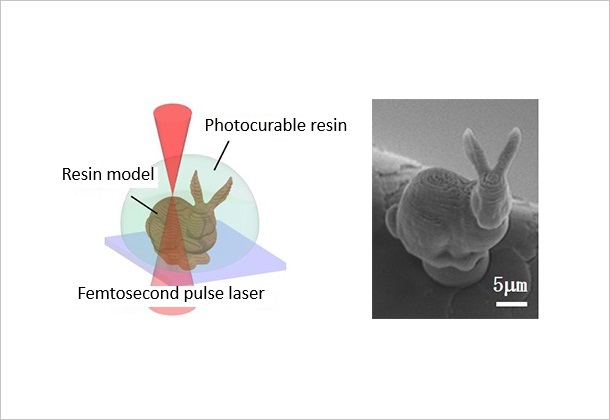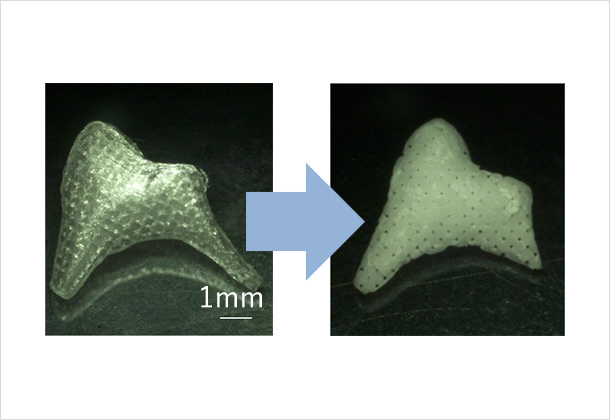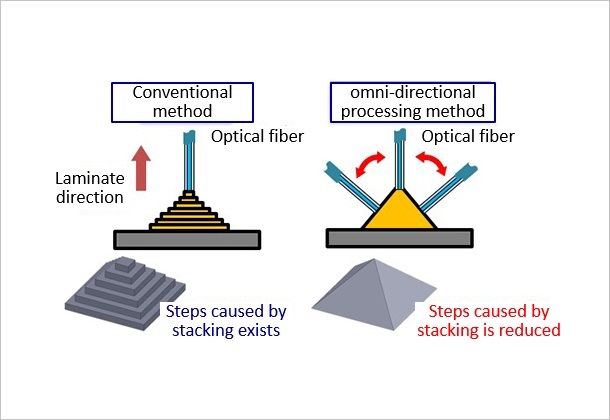Development of super 3D fabrication platform and production of high value-added products
We intend to improve the accuracy and the speed of microscale 3D printing techniques based on stereolithography using various kinds of materials- Research institute
- Yokohama National University, Kanagawa Institute of Industrial Science and Technology (KISTEC)
Background
Stereolithography is widely used for prototyping and functional verification of industrial products because transparent 3D objects can be produced with high accuracy. In addition, ultra-high precision microstereolithography techniques are actively developed in recent years(Figure 1). On the other hand, there are the following problems for manufacturing practical products at present.
- Expansion of drawing line width of micro / nano stereolithography and improvement of drawing speed
The problem that the drawing line width / drawing speed is limited by the spot size.
- Reduction in processing accuracy due to steps caused by accumulation of layers
Steps occurring in the stacking direction, which is a common problem of 3D printers.
- Restrictions on applicable materials
Only photocurable resin can be used.
In this theme, we are working on solving these problems.

Goals
- Seamless 3D fabrication based on variable drawing line width (line witdh:50nm-100μm)
- Reduction of processing time using 3D hollowed-out models (less than 1/10)
- Realization of multiscale omnidirectional 3D fabrication with high accuracy
- Creation of various ceramic functional elements by molding processes(Figure 2)
- Development of artificial organ using biocompatible gel (cm size)
- Open innovation by super 3D fabrication technology platform

- Ripple Effect
- Application to MEMS, wearable device, photonics, advanced medical treatment, etc. will be expected
Implementation contents
- Expansion of drawing line width of micro / nano fabrication and improvement of drawing speed
Flexible control of focus spot size by spatial light modulation
Realization of drawing line width which is difficult to achieve by conventional methods
Highly efficient fabrication using hollowed-out CAD models
- Reduction of steps caused by stacking
Realization of highly accurate 3D fabrication by multiscale omnidirectional processing(Figure 3).
- Expansion of applicable materials
Creation of 3D functional elements with various materials such as ceramics and gels by molding processes
- Open innovation
We construct a high-precision 3D printer with fabrication resolution of 1 μm using a blue laser. The 3D printer is installed at KISTEC and promotes open innovation efforts.

Outputs
- Tools/Technologies
High resolution, Microscale 3D fabrication system (multi scale type)
High resolution, Microscale 3D fabrication system (popular edition)
- Utilization hub of tools and technologies
Yokonhama National University/Kanagawa Institute of Industrial Science and Technology(KISTEC)
- Innovation style
Development of super 3D fabrication platform and production of high value-added products

